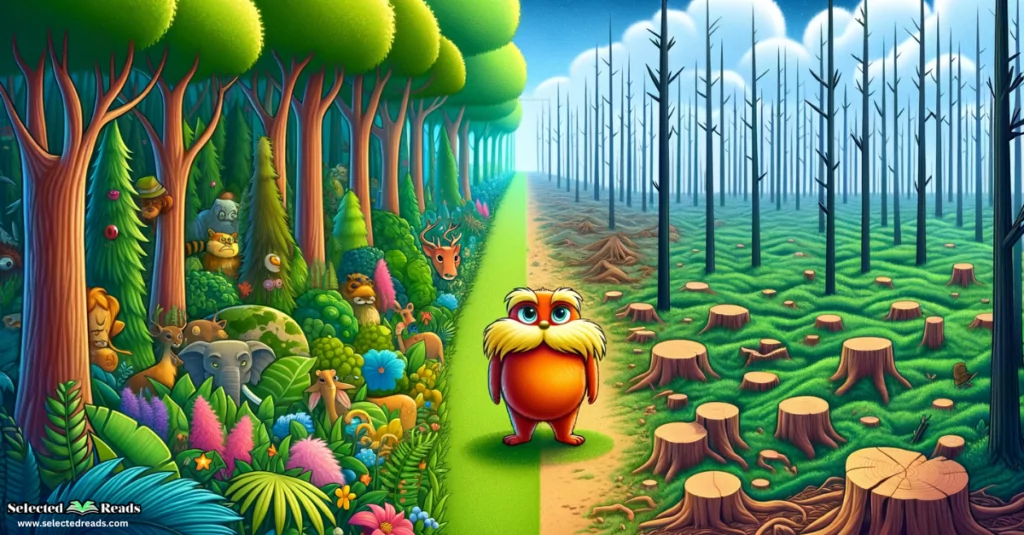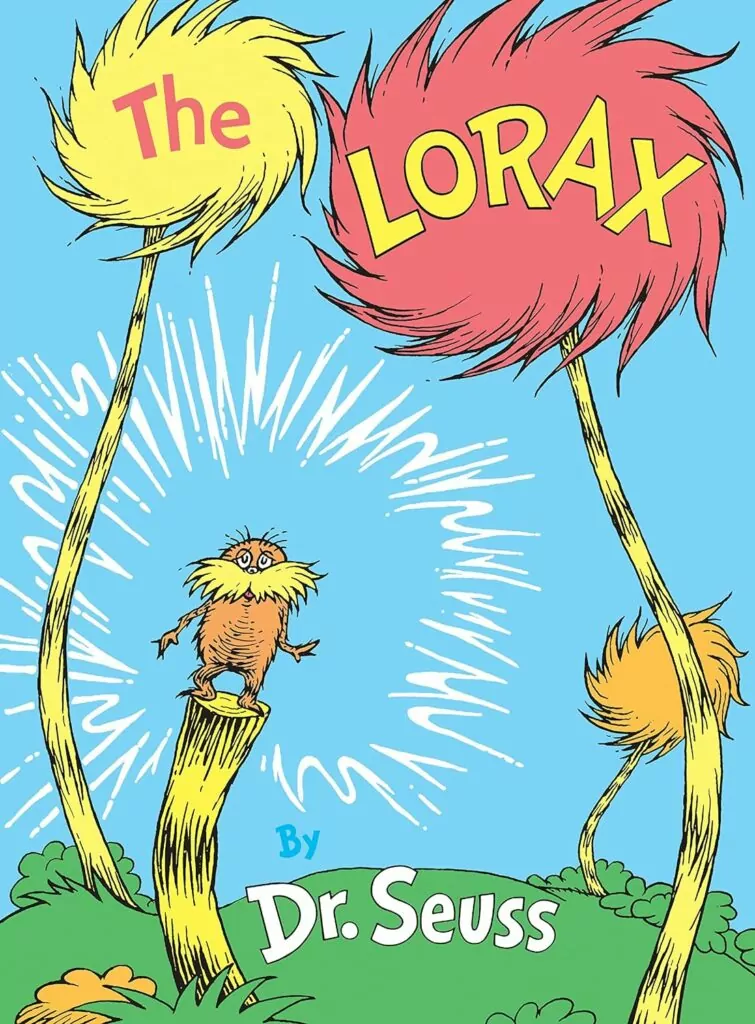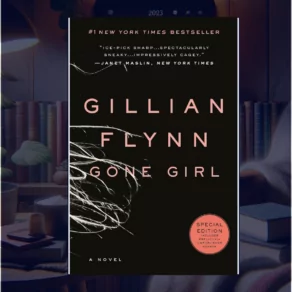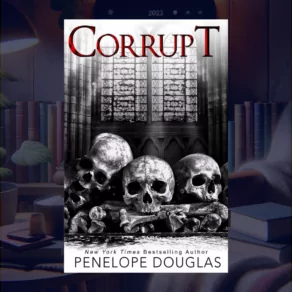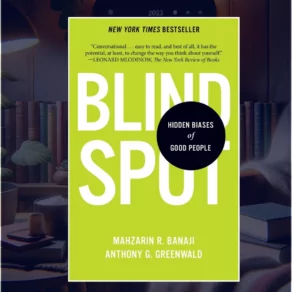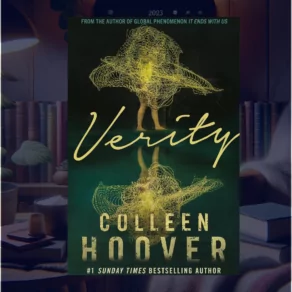In this exploration of Dr. Seuss’s beloved classic, “The Lorax,” we’ll delve into three key aspects of the book that have cemented its status as a timeless piece of children’s literature with profound environmental messages.
First, we’ll provide an extended summary, capturing the essence of the story, its themes, and the impactful way it communicates its message to readers of all ages. Next, we’ll introduce and analyze the main characters, each embodying different facets of the story’s environmental narrative.
Finally, we’ll offer a set of thought-provoking book club questions designed to spark deep and engaging discussions about the book’s themes, characters, and relevance in today’s world.
Related: 17 of The Best Dr. Seuss Books
The Lorax Book Summary
“The Lorax” by Dr. Seuss, a timeless treasure in the world of children’s literature, not only delights its readers with its playful narrative and vivid illustrations but also imparts a profound message about environmental stewardship and responsibility. Published in 1971, this book has since become an influential tool in teaching children about the importance of caring for our planet, making it a staple in the Classic Seuss series.
The story unfolds in a once-beautiful, thriving environment where Truffula Trees sway. The protagonist, the Lorax, is a peculiar, yet compelling creature who “speaks for the trees.” His world changes when the Once-ler arrives. The Once-ler, driven by greed, starts chopping down Truffula Trees to produce Thneeds, a product everyone seemingly needs. This industrialization leads to pollution and environmental degradation, posing a threat to the forest’s ecosystem and its inhabitants, including the Bar-ba-loots, Swomee-Swans, and Humming-Fish.
Dr. Seuss’s narrative is a stirring call to action, emphasizing the consequences of mindless progress and consumption. The Lorax tirelessly confronts the Once-ler, advocating for the trees and creatures suffering from his actions. However, his warnings go unheeded, leading to the eventual disappearance of the wildlife and the Lorax himself, leaving behind a desolate landscape and the haunting word “Unless.”
What makes “The Lorax” particularly impactful is its ability to convey a complex message in a manner that is accessible and engaging for children. The rhyming text and colorful illustrations typical of Dr. Seuss’s style make the book a joy to read, while the underlying theme of environmental conservation resonates deeply, sparking conversations about our role in protecting the earth.
The book closes on a note of hope and empowerment. The Once-ler, now regretful, entrusts the last Truffula Tree seed to a young boy, symbolizing the potential for change and restoration. This ending reinforces the idea that even the smallest individual can make a significant impact. It’s a powerful reminder of our responsibility to speak up for those who cannot speak for themselves and to take action to preserve our world for future generations.
As an educator, this book offers an invaluable resource for introducing environmental themes in a classroom setting. It provides a springboard for discussions about sustainability, conservation, and the impact of human activities on nature. Furthermore, its emphasis on advocacy and individual responsibility aligns perfectly with teaching young minds about their power to effect change.
Photo: Amazon
The Lorax Book Characters
In “The Lorax” by Dr. Seuss, the characters play pivotal roles in weaving the narrative and conveying its environmental message. Here’s a look at the key characters:
- The Lorax: The titular character, the Lorax is a small, orange creature with a mustache. He is the guardian of the forest, speaking for the trees and the creatures who cannot speak for themselves. The Lorax is a symbol of environmental conscience, tirelessly advocating for the preservation of nature against the destructive forces of greed and disregard.
- The Once-ler: A key figure representing industrialization and greed, the Once-ler is an entrepreneur who starts off with good intentions but becomes blinded by profit. His actions of chopping down Truffula Trees to produce Thneeds—a product that “everyone needs”—lead to environmental devastation. The Once-ler’s character arc from greed to regret serves as a moral lesson on the consequences of unchecked industrialization.
- Truffula Trees: Although not characters in the traditional sense, the Truffula Trees are central to the story. They represent nature’s beauty and bounty, being both the source of the Once-ler’s wealth and the victims of his exploitation. The depletion of the Truffula Trees symbolizes the destructive impact humans can have on the environment.
- Bar-ba-loots: These bear-like creatures inhabit the Truffula Trees and feed on the Truffula fruits. The Bar-ba-loots symbolize wildlife affected by habitat destruction. As the trees are chopped down, the Bar-ba-loots suffer from a lack of food, leading to their exodus in search of a new home.
- Swomee-Swans: These birds with their melodious singing add to the vibrancy of the Truffula Tree forest. The pollution caused by the Once-ler’s factories renders their habitat unlivable, silencing their songs and forcing them to flee.
- Humming-Fish: Inhabiting the ponds under the Truffula Trees, the Humming-Fish are affected by the polluted water discharged from the Thneed factories. Their plight highlights the impact of pollution on aquatic life.
- Young Boy: The young boy, who listens to the Once-ler’s story, represents the new generation and hope for the future. The Once-ler entrusts him with the last Truffula Tree seed, symbolizing the potential for redemption and the power each individual holds to make a positive change in the world.
The Lorax Book Club Questions
Here are some questions that could spark insightful conversations in your book club:
- Environmental Themes: How does “The Lorax” address the issue of environmental conservation? Do you think it effectively communicates the impact of human actions on nature to its young readers?
- Character Analysis: Discuss the character of the Once-ler. Do you think he is a villain or a victim of his circumstances? What could he have done differently?
- The Lorax’s Role: The Lorax speaks for the trees, but he also leaves when the environment is destroyed. What do you think this says about advocacy and responsibility in environmental issues?
- Symbolism of the Truffula Trees: The Truffula Trees are central to the story. What do they symbolize, and why do you think Dr. Seuss chose to make them so colorful and whimsical?
- Modern Relevance: Considering the book was published in 1971, how relevant do you find “The Lorax” in today’s context? Has its message grown more urgent?
- Message to Adults and Children: Do you think the book’s message resonates differently with children and adults? If so, how?
- Art and Illustrations: How do the illustrations contribute to the story? Discuss the use of color and imagery in portraying the contrasting states of the environment.
- Narrative Style: Dr. Seuss is known for his unique rhyming style. How does this style contribute to or detract from the seriousness of the book’s message?
- The Ending: The book ends with a note of hope as the Once-ler gives the last Truffula seed to a young boy. What does this ending signify? Do you think it’s an effective conclusion?
- Personal Reflection: Has reading “The Lorax” changed your perspective on any environmental issues? Did it inspire you to take any actions in your daily life?
- Adaptations and Interpretations: If you’ve seen any adaptations of “The Lorax” (like movies, plays, etc.), how do they compare to the book? Do they enhance or diminish the original message?
- Teaching and Sharing: As educators or parents, how would you use this book to teach children about environmental responsibility? Are there any creative activities or discussions you could plan around it?
Final thoughts
“The Lorax” by Dr. Seuss is a powerful narrative that intertwines environmental awareness with captivating storytelling. Through our exploration, we delved into the heart of the story, uncovering the layers and meanings within its vivid narrative and character portrayals. We’ve seen how each character, from the Lorax to the Once-ler, plays a crucial role in conveying the book’s message about the importance of caring for our environment.
The book club questions provided are designed to encourage readers to think critically about these themes, discuss their personal interpretations, and relate the story to broader environmental issues. Dr. Seuss’s “The Lorax” remains a pivotal work in children’s literature, offering vital lessons on environmental stewardship and the power of individual action, wrapped in the engaging, whimsical style that has made it beloved by generations.



